Content Menu
● The Origins of the Monokini
● Evolution of the Monokini Design
● Types of Monokinis
● The Appeal of Monokinis
● Choosing the Right Monokini
● Caring for Your Monokini
● The Impact of Monokinis on Beach Culture
● The Future of Monokini Swimwear
● Conclusion
● Frequently Asked Questions about Monokini Swimwear
>> Q: What is the difference between a monokini and a one-piece swimsuit?
>> Q: Are monokinis suitable for all body types?
>> Q: Can monokinis provide adequate support for larger busts?
>> Q: Are monokinis appropriate for family-friendly beaches?
>> Q: How do I style a monokini for non-beach wear?
The world of swimwear fashion is ever-evolving, constantly pushing boundaries and redefining beach attire. Among the myriad of swimsuit styles that have graced shorelines and poolsides over the years, one particular design stands out for its bold and innovative approach: the monokini. This unique piece of swimwear has captured the imagination of fashion enthusiasts and beachgoers alike, offering a perfect blend of daring design and practical functionality. In this comprehensive exploration, we'll dive deep into the world of monokini swimwear, uncovering its history, design elements, various types, and its impact on the fashion industry.
The Origins of the Monokini
The story of the monokini begins in the 1960s, a decade marked by social upheaval and changing attitudes towards fashion and sexuality. The term "monokini" was coined by Austrian-American fashion designer Rudi Gernreich, who introduced this groundbreaking design to the world in 1964. Gernreich's original monokini was a topless swimsuit that consisted of a bottom part similar to a bikini bottom, with two thin straps extending upwards to loop around the neck, leaving the breasts exposed.
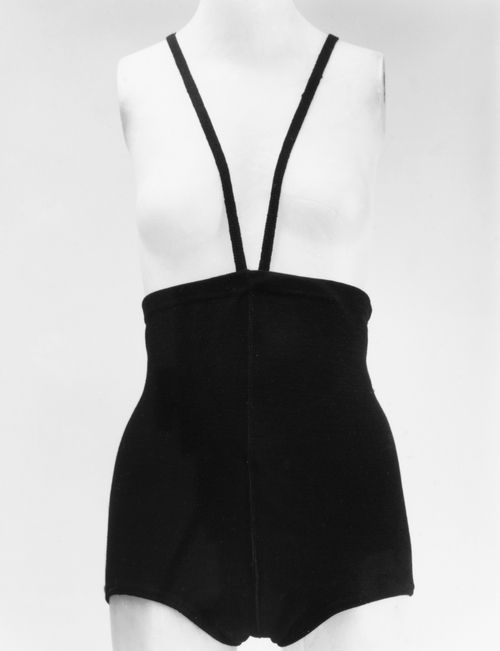
Gernreich's creation was nothing short of revolutionary. It challenged societal norms and pushed the boundaries of what was considered acceptable beachwear. The designer's intention was not merely to create a provocative piece of clothing but to make a statement about body freedom and equality. He believed that the human body should be celebrated in its natural form, free from the constraints of societal expectations and outdated modesty norms.
The initial reaction to the monokini was a mix of shock, outrage, and fascination. While it was met with significant controversy and was even banned in some places, it also garnered attention from the fashion-forward and those who embraced the spirit of the sexual revolution. Despite its limited practical use – very few women actually wore the topless design in public – the monokini succeeded in sparking conversations about body positivity and freedom of expression.
Evolution of the Monokini Design
As time progressed, the concept of the monokini evolved. The term began to be used more broadly to describe any one-piece swimsuit with significant cutouts or openings, typically around the midriff area. This evolution allowed the monokini to become more wearable and appealing to a wider audience while still maintaining its essence of boldness and sensuality.
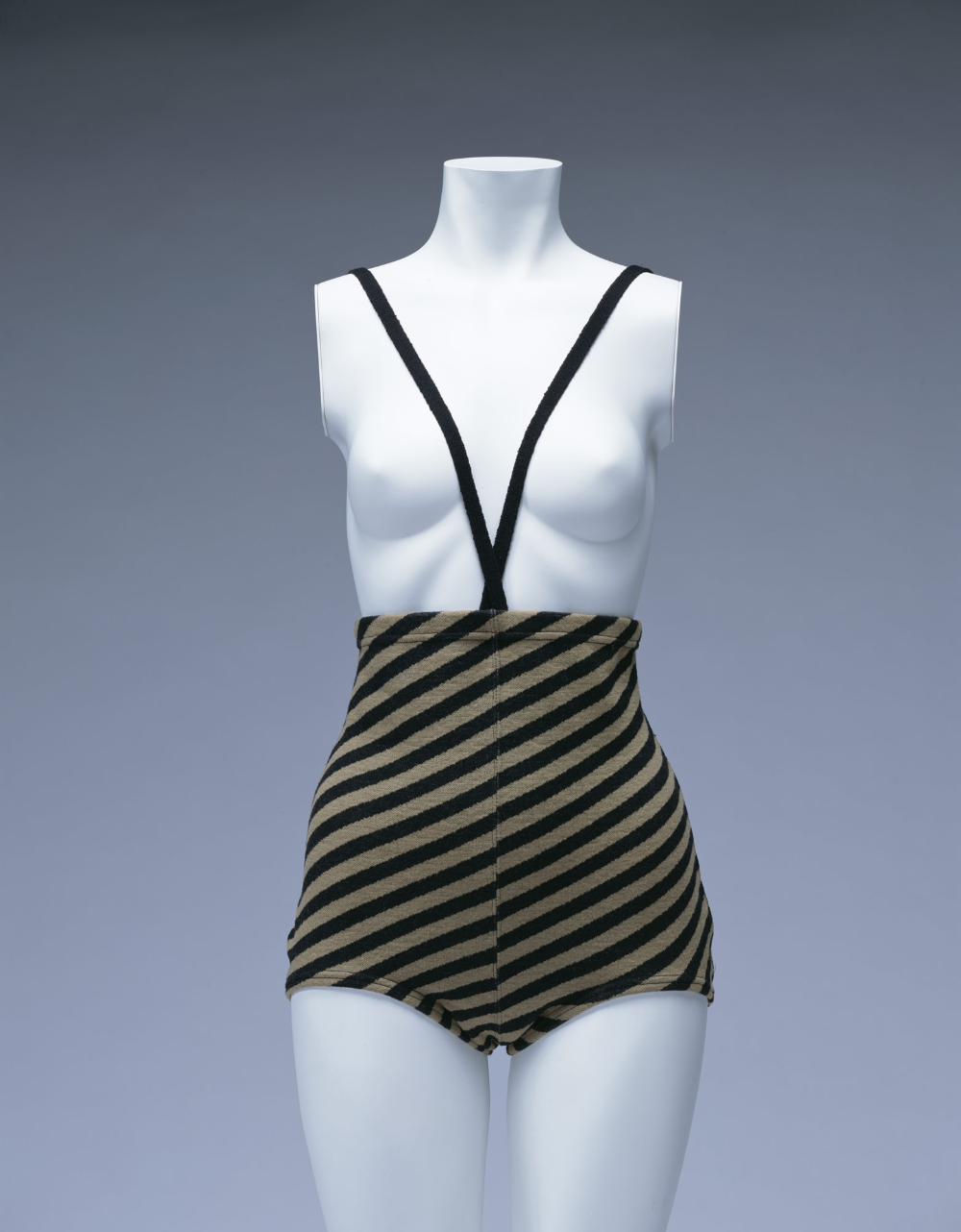
Modern monokinis come in a variety of styles, all sharing the common feature of being a one-piece swimsuit with strategic cutouts. These cutouts can be located at the sides, in the middle of the torso, or even on the back, creating a visually striking effect that highlights the wearer's figure. The top part of contemporary monokinis typically provides coverage for the breasts, addressing the practicality issues of the original design while still offering a daring and fashionable look.
Types of Monokinis
The world of monokini swimwear has expanded to include a wide range of designs, catering to different body types, personal styles, and comfort levels. Here are some popular types of monokinis:
1. Halter Monokini: This style features a halter neckline that ties behind the neck, often with a plunging neckline and cutouts at the sides or midriff.
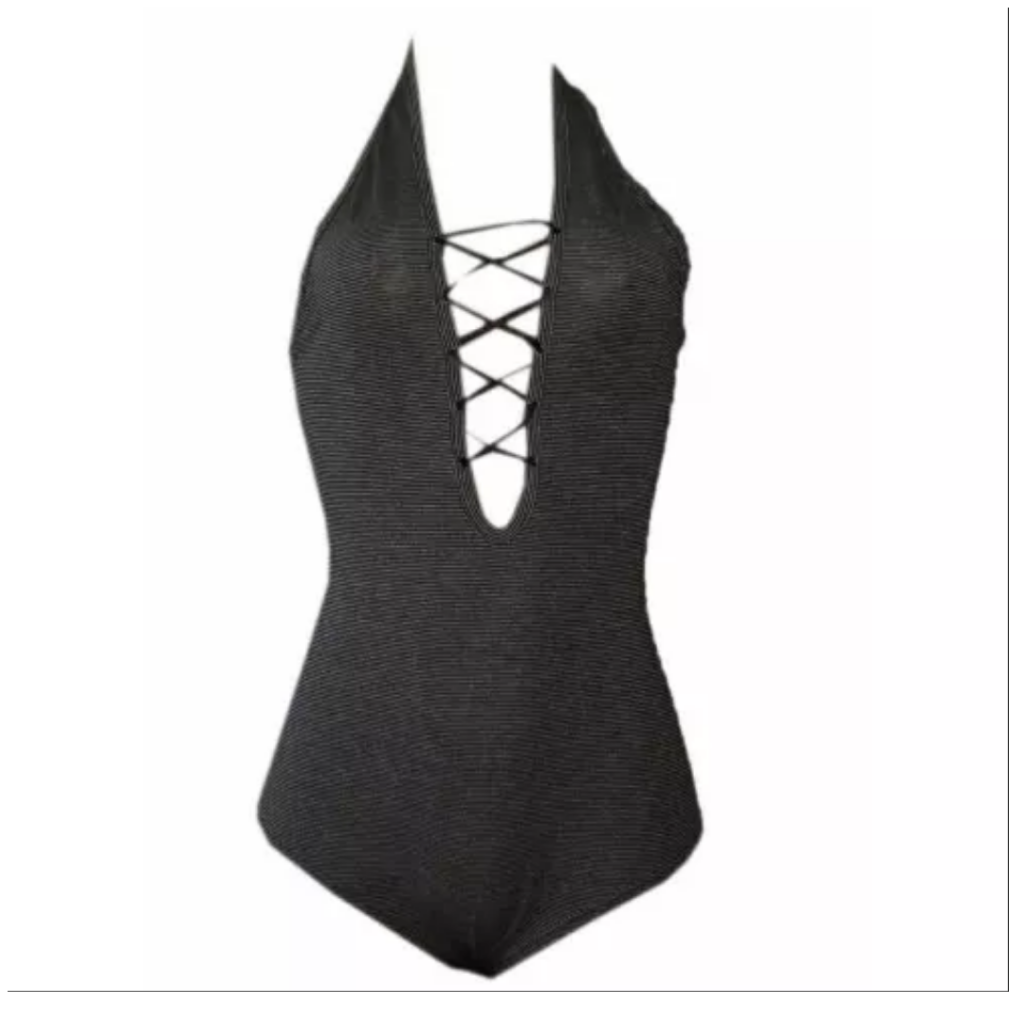
2. Bandeau Monokini: Characterized by a strapless top resembling a bandeau, this type often has side cutouts and may include removable straps for added support.
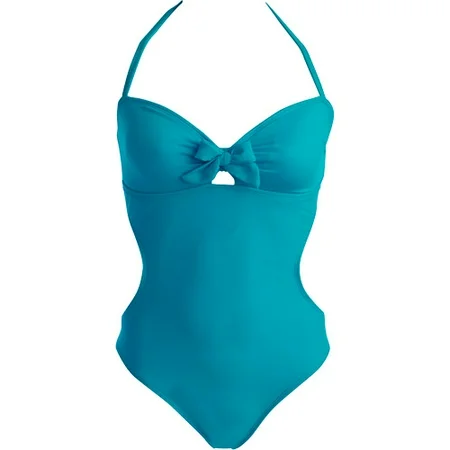
3. High-Neck Monokini: This design features a high neckline, often with a zipper or clasp closure at the back, and cutouts along the sides or midriff.
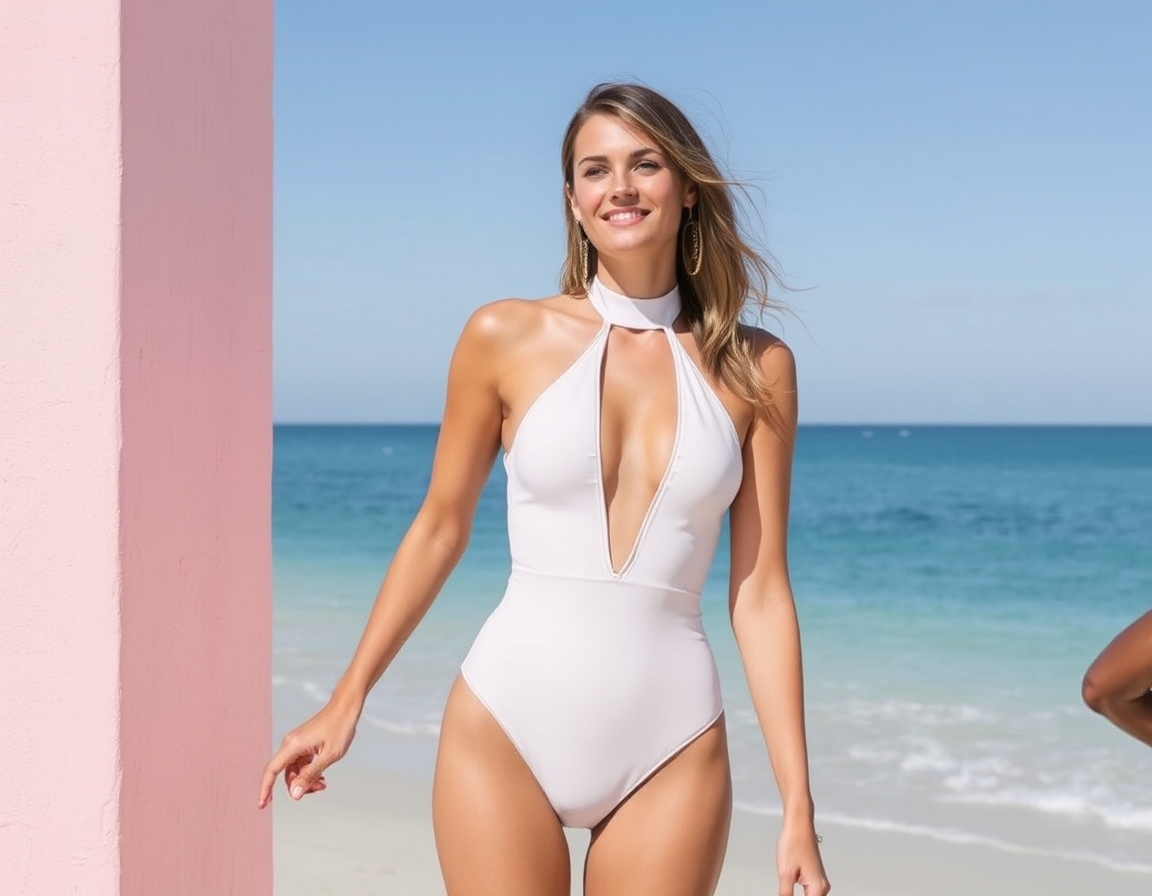
4. Plunge Monokini: Characterized by a deep V-neckline that extends to the navel, this daring style often includes side cutouts and may have adjustable ties for a customized fit.
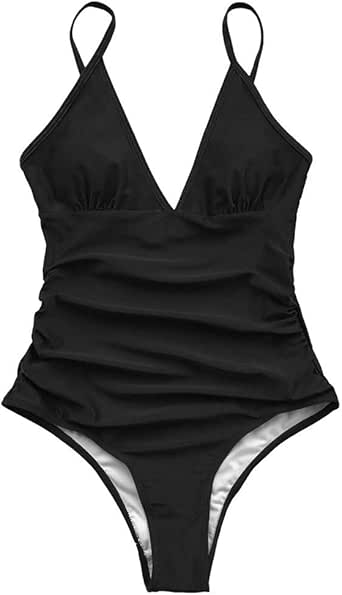
5. Caged Monokini: This edgy style features multiple straps or bands that create a cage-like effect across the torso, often combined with cutouts.
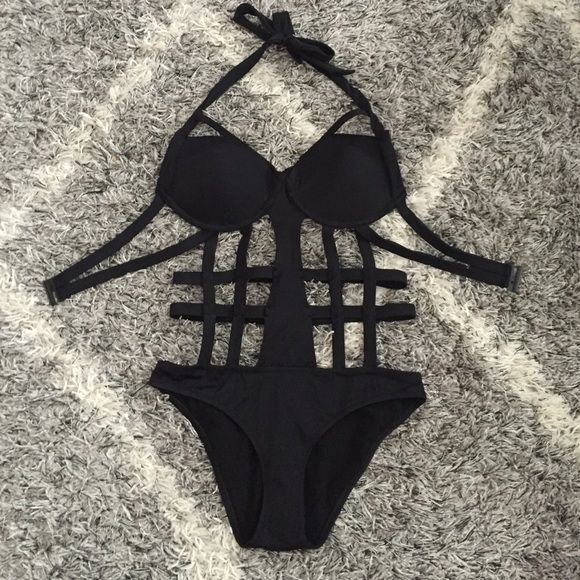
6. One-Shoulder Monokini: As the name suggests, this design has a single shoulder strap, usually paired with asymmetrical cutouts for a unique look.
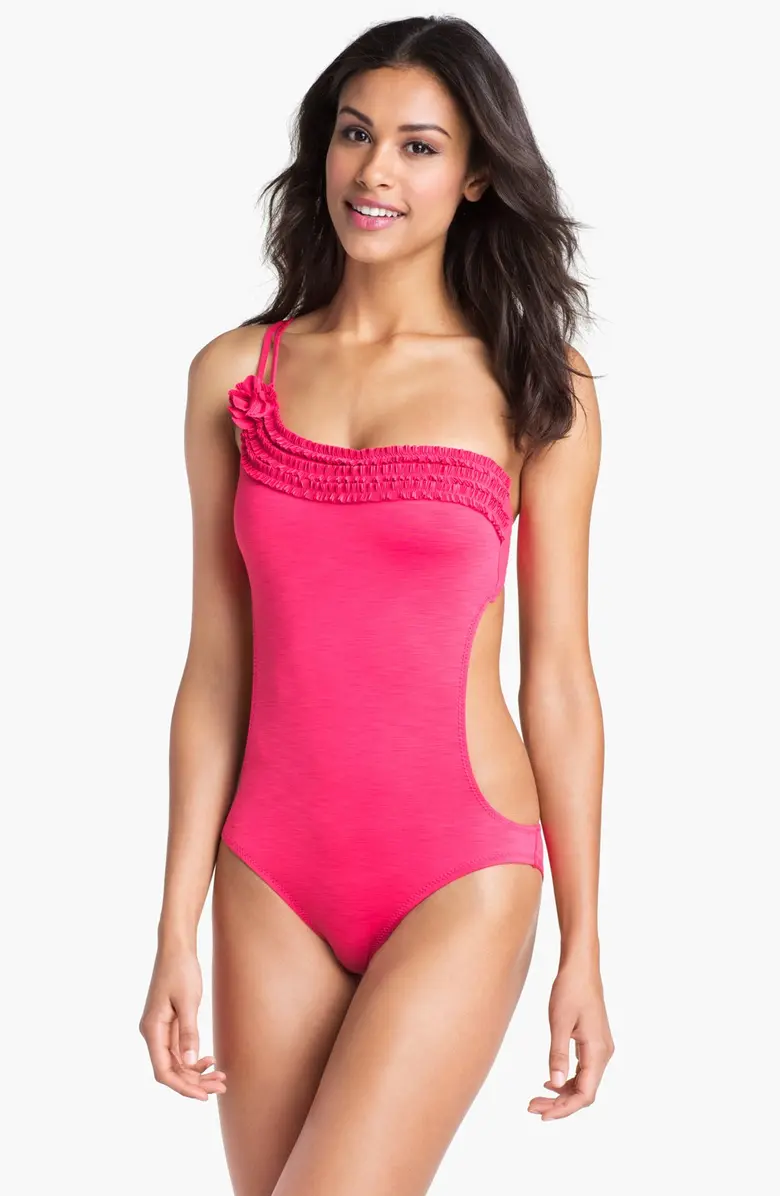
7. Trikini: A variation that blends elements of a bikini and a one-piece, typically consisting of three pieces of fabric connected by strings or thin straps.
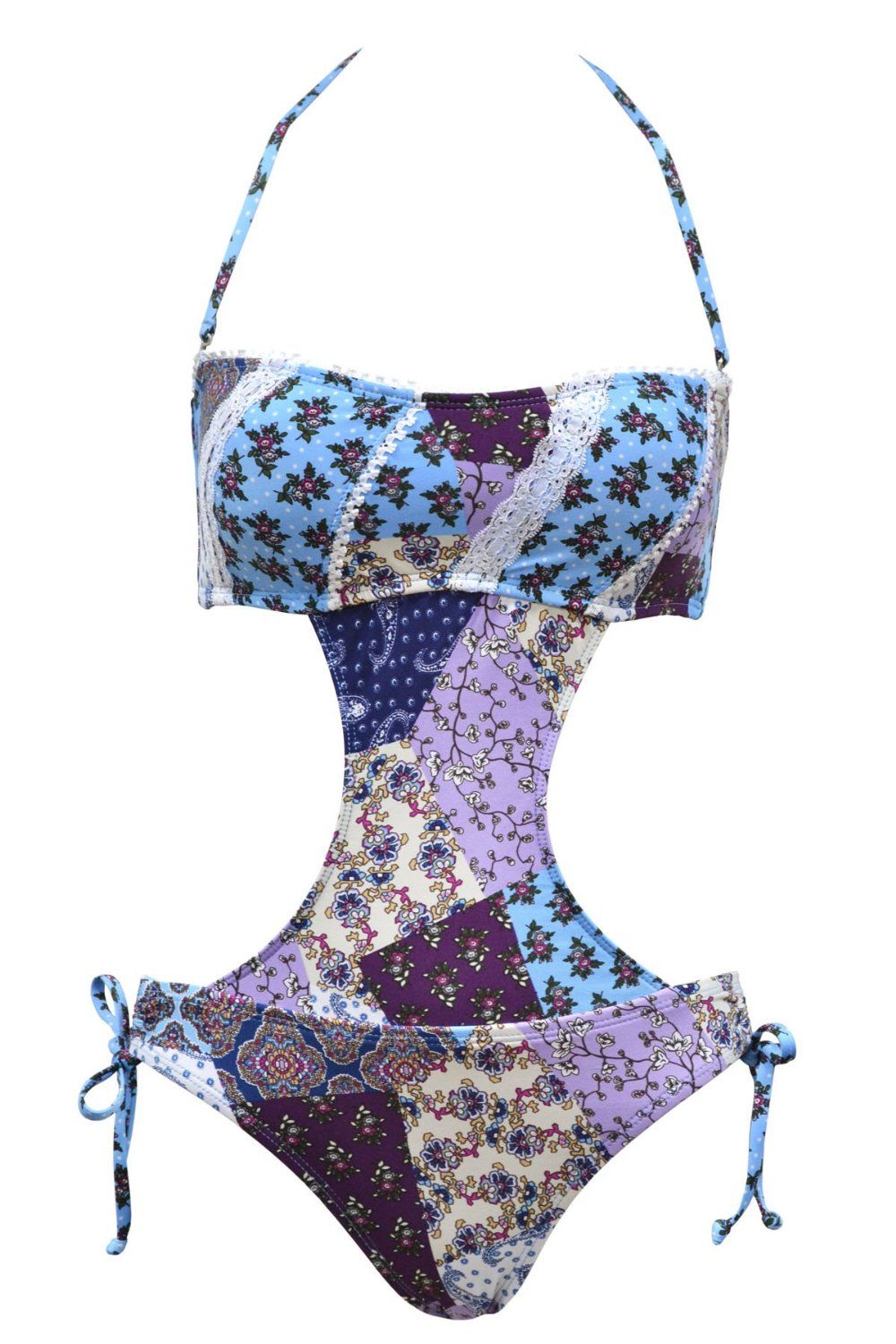
The Appeal of Monokinis
Monokinis have gained popularity for several reasons. Firstly, they offer a perfect balance between the coverage of a one-piece swimsuit and the allure of a bikini. This makes them an ideal choice for those who want to show some skin without feeling overly exposed. The strategic cutouts can also create flattering silhouettes, accentuating curves and creating the illusion of a longer torso.
Moreover, monokinis are versatile. They can be styled as bodysuits when paired with shorts or a skirt, making them suitable for beach-to-bar transitions. This versatility has contributed to their appeal beyond just swimwear, with some designs being incorporated into evening wear and festival fashion.
The fashion industry has embraced the monokini, with designers continually pushing the boundaries of creativity in their designs. From high-end luxury brands to affordable swimwear lines, monokinis have become a staple in swimwear collections. They often feature in runway shows and fashion editorials, showcasing the latest trends in fabric, color, and embellishments.

Choosing the Right Monokini
Selecting the perfect monokini involves considering several factors:
1. Body Type: Different monokini styles flatter different body shapes. For instance, high-waisted designs can create an hourglass silhouette, while plunge necklines can elongate the torso.
2. Support: For those requiring more support, look for monokinis with underwire, padded cups, or adjustable straps.
3. Activity Level: Consider the intended use. Some designs are better suited for lounging, while others offer more support for active beach days.
4. Personal Style: Monokinis come in a range of styles from minimalist to heavily embellished. Choose one that aligns with your personal aesthetic.
5. Comfort: Ensure the fabric and fit are comfortable, especially around the cutout areas.
6. Coverage: Decide how much skin you're comfortable showing and choose a design accordingly.
Caring for Your Monokini
To ensure your monokini remains in top condition, follow these care tips:
1. Rinse after use: Always rinse your monokini in fresh water after swimming to remove chlorine, salt, or sand.
2. Hand wash: Use mild soap and cool water to gently hand wash your monokini.
3. Avoid wringing: Gently squeeze out excess water instead of twisting or wringing the fabric.
4. Air dry: Lay your monokini flat to air dry, away from direct sunlight to prevent fading.
5. Rotate usage: If possible, alternate between different swimsuits to allow each one to fully dry and retain its shape.
The Impact of Monokinis on Beach Culture
The introduction and evolution of the monokini have had a significant impact on beach culture and societal attitudes towards swimwear. By challenging traditional notions of modesty and pushing the boundaries of design, monokinis have contributed to a more diverse and inclusive beach fashion landscape.
They have played a role in body positivity movements, encouraging women of all shapes and sizes to feel confident in their swimwear choices. The variety of monokini styles available means that there's an option for everyone, regardless of body type or personal style preferences.
Furthermore, the monokini has influenced other areas of fashion. The cutout trend, for instance, has made its way into everyday clothing, from dresses to tops. The bold and daring spirit of the monokini has inspired designers to experiment with unconventional designs in other garment categories as well.
The Future of Monokini Swimwear
As we look to the future, it's clear that the monokini will continue to evolve and adapt to changing fashion trends and societal attitudes. We can expect to see innovations in sustainable materials, with eco-friendly fabrics becoming more prevalent in monokini designs. Additionally, advancements in textile technology may lead to monokinis with enhanced properties such as improved UV protection or quick-drying capabilities.
The integration of technology into swimwear is another potential avenue for monokini evolution. We might see designs incorporating smart fabrics that can change color or pattern, or even monokinis with built-in wearable tech for tracking swimming performance or UV exposure.
Customization is likely to play a bigger role in the future of monokinis. With the rise of 3D printing and on-demand manufacturing, we may see a trend towards personalized monokinis tailored to individual body measurements and design preferences.
Conclusion
In conclusion, the monokini stands as a testament to the ever-changing nature of fashion and its power to challenge societal norms. From its controversial beginnings as a topless swimsuit to its current status as a versatile and popular swimwear option, the monokini has carved out a unique place in the world of beach fashion. As we continue to redefine beauty standards and embrace body positivity, the monokini will undoubtedly remain a symbol of bold self-expression and innovative design in the realm of swimwear.
To further illustrate the impact and appeal of monokinis in contemporary fashion, here are some videos showcasing monokini designs in recent swimwear fashion shows:
1. Divaska Swimwear Fashion Show - Miami Swim Week 2023
2. AMAZING Slow Motion Bikini Runway Swimsuit Fashion Show!!
3. Vasaro Swimwear Fashion Show - Miami Swim Week 2023
These fashion shows demonstrate the variety of monokini designs available and how they are presented on the runway, giving you a visual understanding of their impact in the fashion world.
Frequently Asked Questions about Monokini Swimwear
Q: What is the difference between a monokini and a one-piece swimsuit?
A: While both are single-piece swimwear, a monokini typically features strategic cutouts or openings, often around the midriff or sides, whereas a traditional one-piece swimsuit provides full coverage without such openings.
Q: Are monokinis suitable for all body types?
A: Yes, monokinis come in various styles that can flatter different body types. The key is to choose a design that complements your figure and makes you feel confident.
Q: Can monokinis provide adequate support for larger busts?
A: Many modern monokini designs offer good support for larger busts. Look for styles with underwire, adjustable straps, or built-in shelf bras for extra support.
Q: Are monokinis appropriate for family-friendly beaches?
A: Most contemporary monokinis provide adequate coverage and are suitable for public beaches. However, it's always a good idea to check local regulations or beach policies if you're unsure.
Q: How do I style a monokini for non-beach wear?
A: Monokinis can double as bodysuits. Try pairing them with high-waisted shorts, skirts, or palazzo pants for a chic beach-to-bar look. Add accessories like a sarong, sunhat, or statement jewelry to complete the outfit.









































































